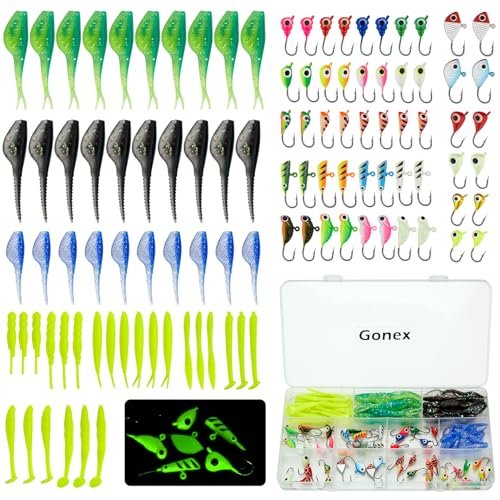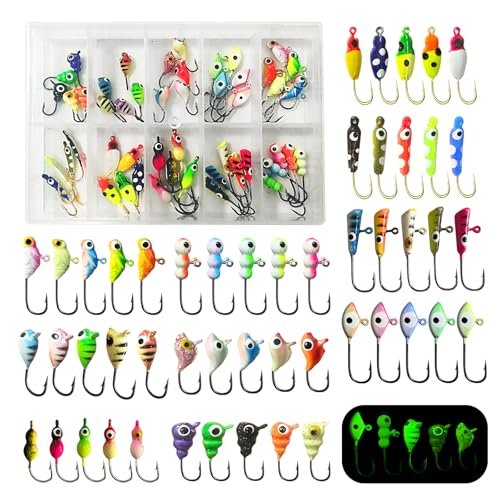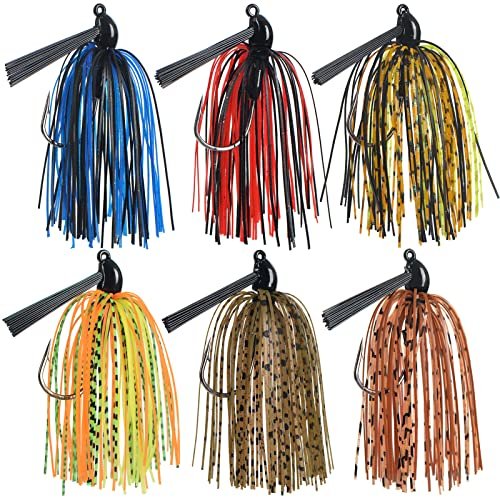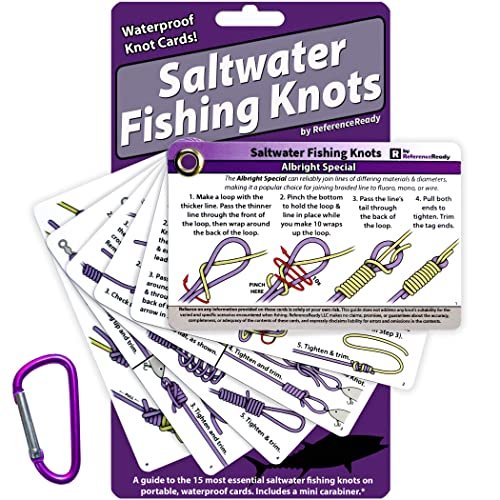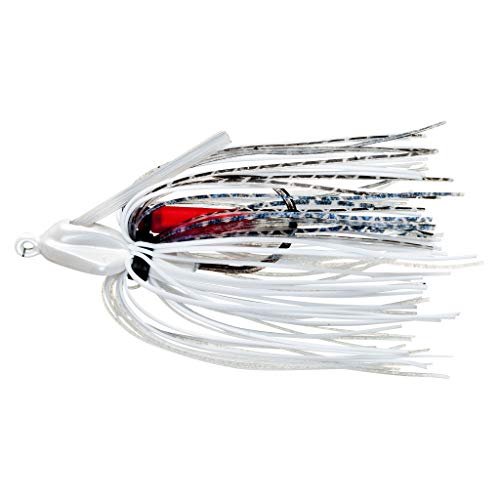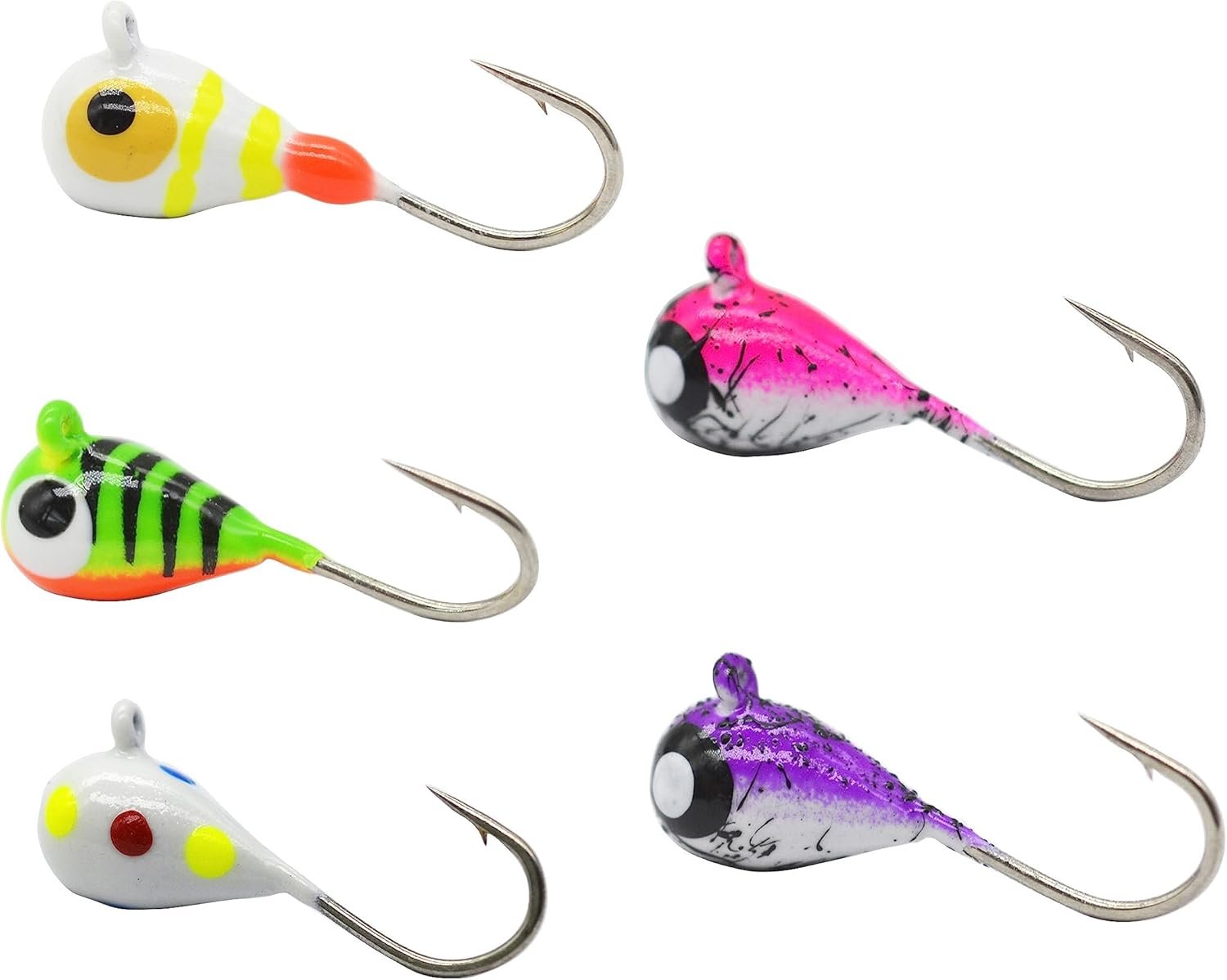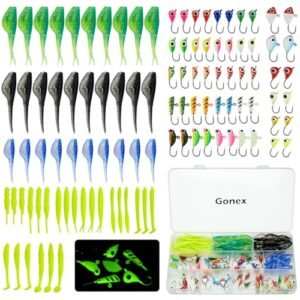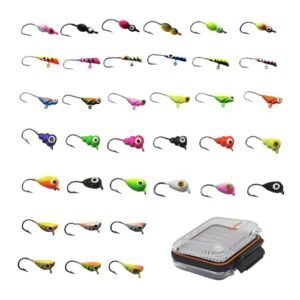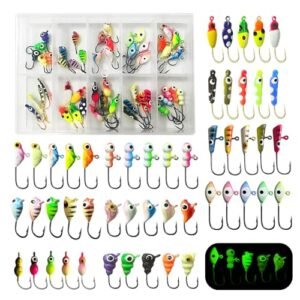How to Tie Fishing Line: Tying a fishing line is an essential skill for anglers of all levels. Knowing the right knot to use can mean the difference between a successful catch and a lost fish. Beginners and seasoned fishermen alike must master this skill to ensure their line holds up under tension.
With practice, tying a secure and effective knot becomes second nature, allowing for a more efficient and enjoyable fishing experience. Remember that the right knot depends on the fishing conditions and the type of line used. Mastery of this skill not only enhances your chances of a good catch but also elevates your overall angling technique.

Credit: www.amazon.com
Choosing The Right Fishing Line
Before you cast your first line, selecting the right type can define your success. Your choice determines how you duel with your aquatic adversary. Not all fishing lines suit every situation. Understand the vital factors that can make or break your angling adventure.
Consider The Type Of Fish You’ll Be Targeting
Different species require specialized strategies. Use this handy guide:
- Trout: Go for a light, invisible line to trick these sharp-sighted swimmers.
- Bass: A robust, versatile line suits this aggressive fighter.
- Catfish: Choose a heavy-duty line to withstand their might and the murky bottoms they dwell in.
Assess The Fishing Conditions
The environment plays a pivotal role in your line choice:
| Condition | Line Type | Reason |
|---|---|---|
| Clear Water | Fluorocarbon | Near invisibility under water |
| Rough Terrains | Braided | Excellent strength and abrasion resistance |
| Long Casts | Monofilament | Easy handling and distance coverage |

Credit: www.amazon.com
Understanding Different Types Of Fishing Lines
Before you cast your line into the water, it’s crucial to iron out the basics. One essential skill is knowing the distinctions between the various types of fishing lines. Each kind possesses unique characteristics suited for different conditions and catches. Unravel the confusion with a simple guide on monofilament, braided, and fluorocarbon lines.
Monofilament Line
The monofilament line, commonly called “mono”, is the jack of all trades in fishing. It’s versatile, easy to handle, and floats on water. Here’s why anglers reel in the monofilament:
- Stretch factor: Absorbs shocks from feisty fish.
- Knot-friendly: Ties easily and holds well.
- Perfect for top water fishing.
It’s also gentle on the wallet but remember, sunlight can weaken it over time.
Braided Line
If you’re after strength and longevity, turn your attention to braided line. Here’s the scoop:
- Super strong with no stretch.
- Thin diameter for longer casting.
- Resistant to abrasion.
Braided lines are the muscle, ideal for battling large catches, yet they’re visible in the water and can be tricky to knot.
Fluorocarbon Line
Seeking invisibility? Fluorocarbon might be your best ally. Cast an eye over these benefits:
- Invisible underwater: Stealthy approach to skittish fish.
- Water-resistant: Uniform strength with no absorption.
- Good for sinks: Better for lures below surface.
Fluorocarbon is excellent for clear waters, but it’s stiffer, which means it needs careful handling.
Tools And Equipment Needed: How to tie fishing line
Before heading out for a serene day at the lake, shore, or cruising the deep blue on a boat, gathering the correct tools ensures your fishing line ties remain secure and intact. The art of tying a fishing line involves precision, a steady hand, and, importantly, the right equipment. Let’s reel in the must-have tools every angler should have at their disposal for successful fishing adventures.
Fishing Line
The backbone of your fishing setup is the fishing line. A variety of lines exist, like monofilament, braided, and fluorocarbon. Each serves a purpose and affects your tie. Choose wisely based on the water conditions and the fish you aim to catch.
Fishing Rod And Reel
The fishing rod and reel combo brings balance and support to your line-tying technique. Ensure your rod complements your chosen reel. Compatibility is key for a seamless fishing experience.
| Type of Rod | Type of Reel |
|---|---|
| Spinning Rod | Spinning Reel |
| Cast Rod | Bait casting Reel |
Scissors Or Clippers
Trimming the excess line after tying a knot is crucial. Use a pair of sharp scissors or clippers. They deliver clean cuts and prevent fraying, maintaining the strength of the knot.
- Scissors
- Sharp edges
- Small for easy handling
- Clippers
- Compact design
- Precision cutting
Step-by-step Guide: How To Tie A Fishing Line
Welcome to the Step-by-Step Guide to Tying a Fishing Line. Whether you’re a budding angler or a seasoned pro, it’s essential to master the art of tying a fishing line. With a few simple steps, you’ll be able to secure your line and start catching fish in no time. Let’s dive into the process with an easy-to-follow tutorial.
Start With A Double Overhand Knot
The foundation of a good fishing knot begins with the double overhand knot. It’s a simple yet strong starting point. Follow these steps:
- Lay the line over the palm of your hand so it forms a loop.
- Pass the end of the line through the loop twice.
- Pull each end to tighten, forming a secure double knot.
Secure With A Uni Knot
The uni knot is versatile and strengthens your line significantly. Here’s how it’s done:
- Make a loop near the hook or lure and lay the tag end over the double line.
- Hold the loop between your fingers and wrap the tag end around both lines five to six times.
- Slide the wraps towards the loop while ensuring they’re orderly and snug.
- Moisten the line and pull the tag end to tighten fully.
Attach To The Reel Properly
Securing the line to your reel is critical for optimal performance while fishing. Follow these simple steps:
- Open the bail of the reel and lay the line around the spool.
- Hold the line with your hand and close the bail with the other hand to lock the line in place.
- Turn your reel handle to wind the line onto the spool, maintaining slight tension.
- Fill the spool until it’s approximately one-eighth of an inch from the rim.
Tips And Tricks: How to tie fishing line
Mastering the art of tying a fishing line is key to a successful fishing trip. Proper knots ensure your line stays secure. Transform yourself into a pro with the following tips and tricks.
Moisten The Line Before Tying
Prevent friction damage by wetting the line. A simple dab of water does the trick. Slippery lines mean stronger knots. Here’s how:
- Use clean water to soak the line.
- Slide the line between your lips or fingers.
- Draw the line through to distribute moisture.
Trim Excess Line Carefully
Excess line can be a nuisance. Trim it to avoid tangles. Do it with care:
- Choose sharp scissors for a clean cut.
- Leave just enough line to prevent the knot from unraveling.
- Snip close to the knot without nicking it.
Common Mistakes To Avoid: How to tie fishing line
Mastering the art of tying a fishing line is crucial for every angler. A secure and suitable knot ensures that the big catch does not slip away. Yet, even experienced fishers make errors that lead to disappointing outcomes. Be aware of these common mistakes to steer clear of any unwelcome surprises.
Not Securing The Knot Properly
A knot may seem small, but it can determine your success on the water.
- Tighten the knot with care.
- Trim the tag end close, but leave a small overhang to prevent slippage.
- Wet the line lightly before securing to reduce friction.
A loose knot is the main reason for fish escaping. Double-check your knots before casting.
Using An Inappropriate Knot For The Line
Different situations call for different knots.
| Type of Line | Recommended Knot |
|---|---|
| Monofilament | Improved Clinch Knot |
| Braided | Palomar Knot |
| Fluorocarbon | Double Uni Knot |
Knots like the Palomar work well for slippery lines. For stiffer materials, try a Uni knot.
Selecting the wrong knot can weaken the line. This mistake often leads to line breaks. Always match the knot to your line type.
Practice Makes Perfect: How to tie fishing line
Mastering the art of tying fishing lines is crucial for every angler. Practice not only enhances skill but ensures reliability during that critical moment of the catch. It’s like any craft where doing it over and over builds muscle memory. Knots that hold tight under pressure don’t happen by chance. They result from dedication and consistent practice.
Take Time to Practice Knot Tying
Take Time To Practice Knot Tying
Tying knots might seem boring at first, but it’s a skill that pays off.
- Allocate a few minutes daily to work on different knots.
- Use various types of line for a feel of how each behaves.
- Simulate real-world conditions like wet lines and windy settings.
Keep your tools and lines accessible for a quick practice session. Try new knots and challenge old favorites for strength.
Seek Feedback and Advice
Seek Feedback And Advice
No angler is an island. Learn from those with more experience.
- Join local fishing clubs or online forums.
- Watch instructional videos from professionals.
- Ask seasoned anglers to review your technique.
Capture your own knots on video to watch and improve. Combine feedback with practice for best results.
Maintaining And Inspecting Your Fishing Line
Keeping your fishing line in tip-top shape is crucial. Regular maintenance and inspections ensure durability and performance. Learn how to maintain your line like a pro.
Regularly Check The Line For Wear
Fishing lines can weaken over time. It’s essential to look for signs of wear and tear. This will help you avoid line breakage.
- Check for frays or nicks.
- Feel for rough patches.
- Look out for discoloration or sun damage.
Tighten your knots and replace your line if any damage is noticed. A healthy line means a better catch.
Clean And Store Properly
Saltwater, dirt, and debris damage your line. A clean line is a long-lasting line. Here’s how to keep it clean:
- Rinse your line with fresh water after each use.
- Dry your line before storing.
- Store your line in a cool, dry place.
- Avoid direct sunlight as UV rays can weaken the line.
Proper storage will extend the life of your line, ensuring optimal performance on your next trip.
Frequently Asked Questions: How To Tie Fishing Line
What Are The Best Knots For Fishing Lines?
Different knots are suited for various fishing needs. The Improved Clinch Knot is highly popular for its strength and ease of tying. The Palomar Knot is another excellent choice known for its reliability, especially with braided lines.
How Do You Tie A Secure Knot For Fishing?
To tie a secure fishing knot, thread the line through the hook eye and double back. Twist the line around itself five or six times. Thread the end through the loop near the eye, then pull tight, ensuring the knot is lubricated and properly seated.
Can You Simplify Tying A Fishing Line Knot?
Simplifying a fishing line knot can be achieved by practicing the Palomar Knot. Simply double your line, pass it through the hook eye, tie an overhand knot, slide the loop over the hook, and tighten. It’s a straightforward, strong knot suitable for most fishing scenarios.
What’s The Strongest Fishing Line Knot?
The San Diego Jam Knot is often regarded as one of the strongest fishing line knots. It is ideal for heavy line and can be used for both monofilament and braided lines. This knot maintains a high percentage of the line’s original strength when tied correctly.
Conclusion: How to tie fishing line
Mastering the skill of tying fishing line is essential for any angler. With practice, these techniques become second nature. Perfect your knots to prevent the disappointment of a lost catch. Now, gear up, cast your line, and enjoy the tranquility of fishing with confidence.
Happy angling!









